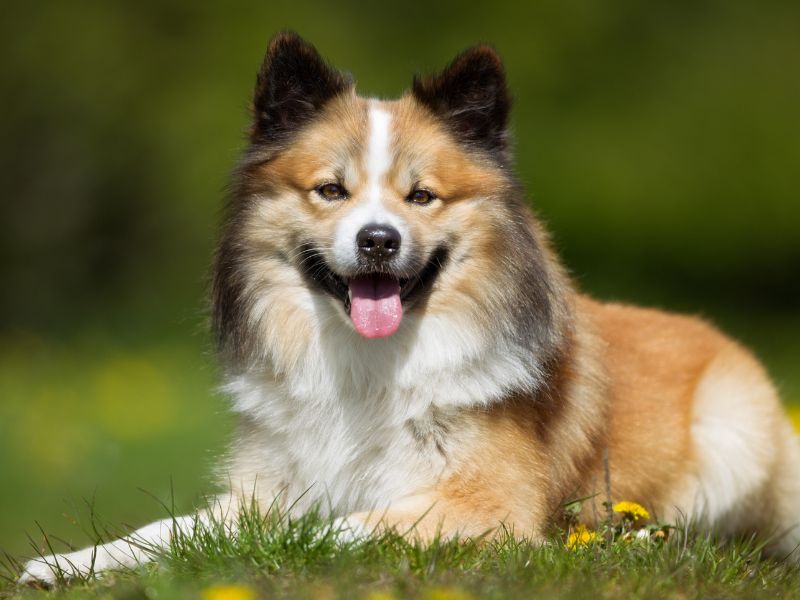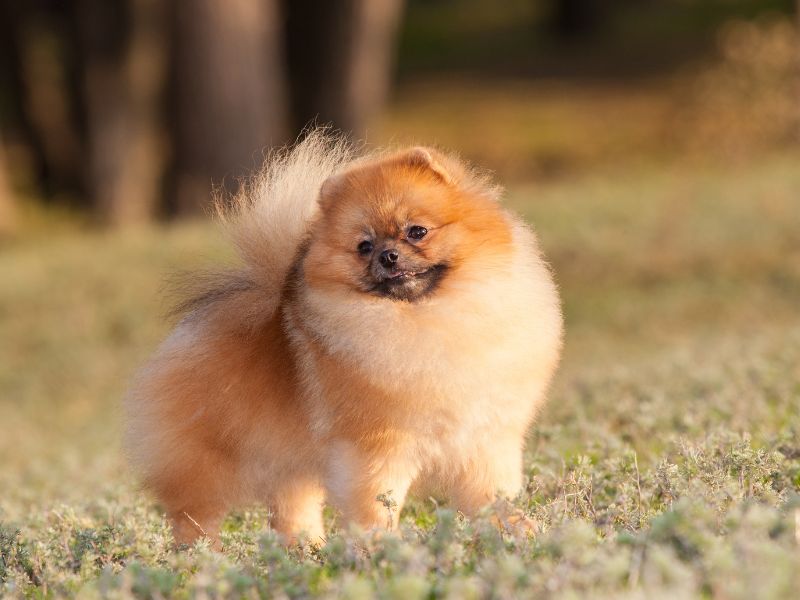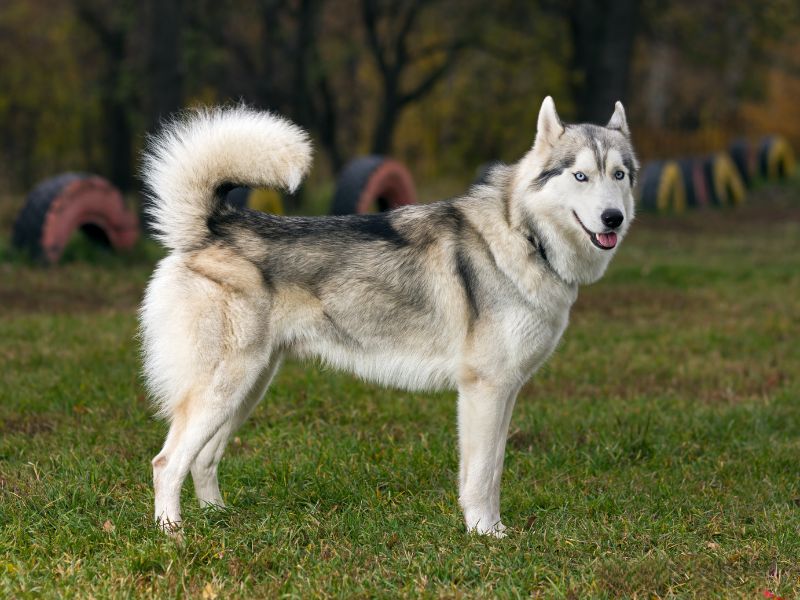Spitz dog breeds share characteristics, such as long, fluffy coats and pointed ears and noses, and are frequently found in areas with severe winters. Many of their jackets are white and serve as insulation to keep them warm in chilly weather. Spitz dogs can have tails that hang down, but most are curled up to lay over their backs. Between 50 and 70 different spitz dog breeds exist. Including large and tiny species, some dogs are developed for laborious work, while others are intended to perform little work and prefer to cuddle with their owners as companion animals.
What Dog Breeds Are Spitz?
Some of the top Spitz-like dog breeds are listed below:
Siberian husky
One of the most well-known spitz dog breeds is the Siberian husky. This worker dog sprints across its home’s freezing tundra with a wolf-like look.
Icelandic Sheepdog
As the only native dog breed of Iceland, the Icelandic Sheepdog is a well-liked favorite. These cheerful, active dogs are on the smaller side, growing to 18 inches. Their forefathers accompanied Norse immigrants to Iceland. They are raised to herd horses and sheep.
The Pomeranian
The Pomeranian can weigh no more than 7 pounds, a toy dog breed. Despite their diminutive size, they have strong personalities. They are excellent family dogs and watchdogs since they are courageous, clever, and lively.
The Samoyed
The Samoyed’s dense, white fur and history of sled-pulling, hunting, and herding indicate its arctic heritage. These stunning white canines create strong relationships with their owners and are pack-oriented. They are loyal, friendly, kind, and hard-working.
Shiba Inu
The Shiba Inu was developed as a hunting dog in Japan. This spitz breed is the most popular companion dog in Japan and is devoted, courageous, and self-assured. However, they may develop significant ties with their people but are autonomous and independent-minded.
The Chow Chow
The coat of this reticent and independent dog might be rough or smooth. Chows with rough skin have a medium-length straight, thick, coarse, and complete undercoat that is soft and wholly.
Norwegian Lundehund
These pups lack dewclaws and instead have six functional toes on each paw. They were developed to hunt puffins among rugged cliffs. Their necks may stretch back to the point where their heads touch their spines, thanks to their extreme flexibility.

Are Spitz Related to Wolves?
Spitz breeds are often distinguished by their perky ears, sharp muzzles, and curly or bushy tails, which give them a highly wolf-like look. According to recent DNA tests, they have a greater genetic connection to wolves than those seen in other breeds. The spitz breed, which has many canines resembling foxes, is known for being clever, energetic, and high shedders.
Here are four spitz dog breeds that look just like foxes.
Shiba Inu
These independent, intelligent dogs may be difficult to teach and will occasionally exhibit problems like aggressiveness and possessiveness. They are a loving and devoted breed with their family members, yet they might be reserved with outsiders.
Akita
They are rarely peaceful, erratic dogs that can be challenging to teach. They have, however, a reputation for being utterly devoted and have long been used as guards and hunting dogs.
American Eskimo Dog
The snow-white Arctic fox and the American Eskimo dog have comparable appearances. These dogs are frequently devoted, kind, and loving guardians of their families.
Spunky Schipperke
The headstrong, independent Schipperke resembles a little black fox. Although these dogs are often devoted and caring, they have a propensity for barking. They like participating in regular activities, especially physical activity outdoors.

And: Is Dog Daycare Good For Your Dog?
See Also: What Are Small Doodle Breeds?
Is There a Miniature Spitz?
Over 6,000 years ago, dogs of the Spitz breed first appeared in Europe. The versatile Spitz was raised as a hunter, herder, and watchdog up to the 19th century. Different cultures over time produced many Spitz breeds, such as the Giant Spitz (used for herding and guarding) and the Miniature Spitz, according to their requirements (for companionship).
The Miniature Spitz looks like a fox. Its coat is thick, puffy, rough, and typically brown, black, grey, orange, or off-white. It has a tiny, robust frame. The wedge-shaped head is somewhat rounded, with a straight nose, sharp ears, and attentive, friendly-looking black eyes. The Miniature Spitz has a distinguished and vibrant appearance overall. The Miniature Spitz is a lively, intelligent, and interested dog around the house. Although it enjoys its freedom, it also longs for companionship and play.
The Miniature Spitz has a strong bonding ability with its owner. This can occasionally make it a little wary of strangers, making it an excellent watchdog and a dependable friend. The Miniature Spitz is capable of loud barking despite its small size. This dog will be charming and adorable with the correct instruction and socialization.
What Is the Smallest Spitz?
The smallest breed of dog in the Spitz family is the Pomeranian. The dogs weren’t Pomeranians when they were first brought to England in the middle of the 19th century; they were pretty different. The most likely predecessor of the breed was the Deutscher Spitz, which was white and weighed around 30 pounds. The Pomeranian was a sheepherder in its more significant form. The English Kennel Club approved the Pomeranian in 1870. But the breed’s popularity didn’t increase until Queen Victoria brought a Pomeranian from Italy.
Additionally, unlike hers, which was large and grey, most other dogs were little and had a variety of colorful strains. In American dog competitions, the Pomeranian was entered. It wasn’t given a proper categorization until 1900. By that time, the breed was displayed in England and the United States in various hues. The practice of breeding Pomeranians that were smaller in stature persisted, and even more, the focus was placed on their coat and “puff-ball” appearance. This little sled dog still draws dog lovers and devoted families today.
Conclusion
Spitz breeds may be independent and brave as well as loyal, smart, and loving. These energetic dogs have working backgrounds, and their jobs have ranged from helping hunters discover game, to dragging sleds with hefty loads, to herding animals like reindeer. They are not necessarily suitable for inexperienced owners. The spitz breed enjoys playing with its owners and is likely to form a close relationship with them. Regular maintenance is also necessary for their thick coats to prevent shedding. They, therefore are a great companion, and we should strive to maintain them in a healthy and conducive environment that promotes their well-being.
Featured image: A Siberian Husky Dog Outdoors

